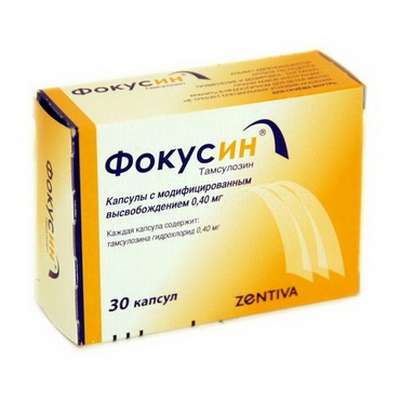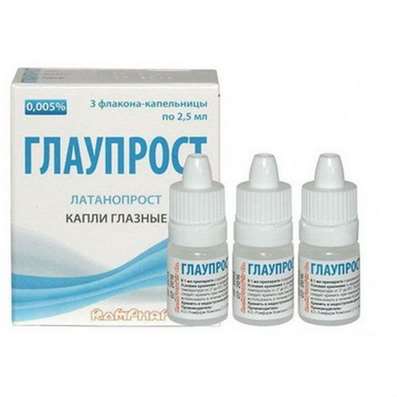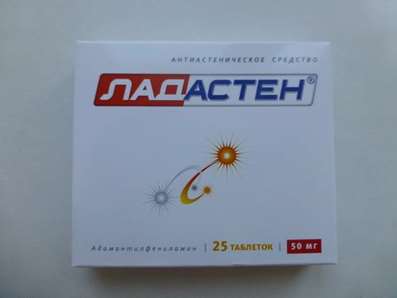Instruction for use: Coronal
I want this, give me price
Trade name of the drug – Coronal
Dosage Form: tablets
Active substance: Bisoprololum
ATX
C07AB07 bisoprolol
Pharmacotherapeutic group: Beta-blockers
The nosological classification (ICD-10)
I10 Essential (primary) hypertension: hypertension; Arterial hypertension; Arterial hypertension crisis course; Essential Hypertension; Essential hypertension; Essential hypertension; Essential hypertension; Essential hypertension; Primary hypertension; Arterial hypertension, complications of diabetes; The sudden increase in blood pressure; Hypertensive disorders of blood circulation; hypertensive condition; hypertensive crises; arterial Hypertension; malignant Hypertension; Hypertonic disease; hypertensive crises; accelerated hypertension; malignant hypertension; The aggravation of hypertensive disease; Transient hypertension; Isolated systolic hypertension
I15 Secondary hypertension: Arterial hypertension, complications of diabetes; hypertension; The sudden increase in blood pressure; Hypertensive disorders of blood circulation; hypertensive condition; hypertensive crises; hypertension; arterial Hypertension; malignant Hypertension; hypertensive crises; accelerated hypertension; malignant hypertension; The aggravation of hypertensive disease; Transient hypertension; hypertension; Arterial hypertension; Arterial hypertension crisis course; renovascular hypertension; Hypertension symptomatic; Renal hypertension; Renovascular hypertension; renovascular hypertension; Symptomatic hypertension
I20 Angina [angina]: Heberden disease; Angina pectoris; The attack of angina pectoris; recurrent angina; Spontaneous angina; Stable angina pectoris; Angina rest; Angina progressing; Angina mixed; Angina spontaneous; stable angina; Chronic stable angina; Angina Syndrome X
I25 Chronic ischemic heart disease: Coronary heart disease on the background of hypercholesterolemia; Coronary heart disease is a chronic; Coronary heart disease; Stable coronary artery disease; Percutaneous transluminal angioplasty; Myocardial ischemia, arteriosclerosis; Recurrent myocardial ischemia
Composition (per tablet):
active substance: bisoprolol fumarate 5/10 mg
Excipients
Core: MSC - 133/128 mg; corn starch - 7.5 / 7.5 mg; sodium lauryl sulfate - 1.1 mg; colloidal silicon dioxide - 2.2 mg; magnesium stearate - 1.5 / 1.5 mg
shell film: Valium - 6.4 / 6.4 mg; macrogol 400 - 1.28 / 1.28 mg; titanium dioxide - 2.3 / 2.3 mg; dye iron oxide yellow (E172) - 0.02 mg / -; dye iron oxide red (E172) - - / 0.02 mg
Description
Tablets 5 mg: Round, biconvex, film-coated light yellow color, with Valium.
Tablets 10 mg: Round, biconvex, film-coated light-pink color, with Valium.
Characteristic
Selective β1-blocker.
Pharmacological Properties of Coronal
Pharmachologic effect - antianginal, antihypertensive, antiarrhythmic, beta-adrenoceptor blocking.
Pharmacodynamics
Selective β1-blocker without its own sympathomimetic activity, has no membrane stabilizing action. It reduces plasma renin activity, reduces myocardial oxygen demand, reduces heart rate (at rest and during exercise). It has antihypertensive, antiarrhythmic and antianginal effects.
Blocking in low doses of β1-adrenergic receptors of the heart, reduces the formation of catecholamines stimulated cAMP from ATP, reduces intracellular calcium ion current, has a negative chrono-, Drome, BATM and inotropic effect (slows heart rate, depresses conduction and excitability, reduces myocardial contractility).
With increasing doses providing β2-adrenoceptor blocking action.
PR at the beginning of the drug in the first 24 hours after ingestion is increased (as a result of reciprocal increase in the activity of α-adrenoceptor stimulation and removal of β2-adrenergic receptors), after 1-3 days returned to the initial value, and prolonged decreases appointment.
The antihypertensive action is due to a decrease in cardiac output, sympathetic stimulation of peripheral vascular disease, decreased activity of the RAAS (important for patients with initial hypersecretion of renin) and central nervous system, restoring the sensitivity of baroreceptors of the aortic arch (there is no increase in their activity in response to blood pressure reduction) and in finally - a decrease in the peripheral sympathetic influences. When hypertension effect occurs within 2-5 days, stable operation - through 1-2 months.
Antianginal effect is due to a decrease in myocardial oxygen demand as a result of deceleration in heart rate, decrease contractility, lengthening of diastole, improved myocardial perfusion, as well as a decrease in the sensitivity of the myocardium to the effects of the sympathetic innervation. It reduces the number and severity of angina attacks and increase exercise tolerance. By increasing end-diastolic pressure in the left ventricle and increase the tension of the muscle fibers of the ventricles can increase oxygen demand, especially in patients with CHF.
The antiarrhythmic effect is due to the elimination of arrhythmogenic factors (tachycardia, increased activity of the sympathetic nervous system, increased cAMP content, hypertension), decrease in the rate of spontaneous excitation of the sinus and ectopic pacemakers and slowing AV of (reduction of antegrade and to a lesser extent in the retrograde direction through the AV node) and on additional routes.
When used in high therapeutic doses, unlike non-selective β-blocker, has a less pronounced effect on organs containing β2-adrenergic receptors (pancreas, skeletal muscle, smooth muscle of peripheral arteries, bronchial and uterine) and carbohydrate metabolism, causes delay sodium ions (Na +) in the body; atherogenic action expression is not different from that of propranolol. When used in large doses (200 mg or more) has a blocking effect on both β-adrenoceptor subtypes, primarily bronchial and vascular smooth muscle.
Pharmacokinetics
Absorption - 80-90%, it does not affect food intake on absorption. Cmax in plasma observed after 1-3 hours, the connection with plasma proteins about 30%.
The permeability of the BBB and placental barrier - low secretion of breast milk - low.
It is metabolized in the liver to inactive metabolites, T1 / 2 - 10-12. H About 98% is excreted by the kidneys, of which 50% is excreted unchanged in less than 2% - with bile.
Indications for Coronal
arterial hypertension;
Coronary heart disease: prevention of angina attacks.
Contraindications for Coronal
hypersensitivity to the drug and other β-blockers;
shock (including cardiogenic), congestive heart failure, chronic heart failure decompensation, AV block II-III degree (without pacemaker), sinoatrial blockade, sick sinus syndrome, bradycardia, cardiomegaly (with no signs of heart failure), hypotension (Sad less than 100 mm Hg, especially myocardial infarction);
asthma and chronic obstructive pulmonary disease history;
simultaneous MAO inhibitors (except for MAO-B inhibitors);
concomitant use floctafenine and sultopride;
late stages of peripheral circulation;
Raynaud's disease;
lactation;
age of 18 years (effectiveness and safety have been established).
Precautions: hepatic failure, renal failure (Cl creatinine <20 ml / min), metabolic acidosis, pheochromocytoma (with concomitant use of alpha-blockers), diabetes in the stage of decompensation, AV block I degree, Prinzmetal angina, restrictive cardiomyopathy, congenital malformations heart or valvular disease with severe hemodynamic disorders, chronic heart failure, myocardial infarction within the last 3 months, psoriasis, depression (including history), severe allergic reaction in history, pregnancy, older age, strict diet, holding desensitizing immunotherapy allergens and allergen extracts.
Pregnancy and breast-feeding
When pregnancy Coronal prescribed only on strict conditions if the expected benefit to the mother outweighs the potential risk to the fetus. During the 72 hours prior to delivery the drug should be discontinued in connection with the possible development of the fetus / newborn bradycardia, hypotension, hypoglycemia and respiratory depression.
If reception Coronal preparation required during lactation, breast-feeding should be discontinued.
Side effect of Coronal
Frequency: very common (≥1 / 10); commonly (≥1 / 100, <1/10); uncommon (≥1 / 1000, <1/100); rare (≥1 / 10,000, <1/1000); very rare (<1/10000, including isolated reports).
CNS: rarely - fatigue, asthenia, dizziness, headache, drowsiness or insomnia, depression, rarely - hallucinations, nightmares, convulsions.
From the sensory organs: rarely - visual disturbances, reduced secretion of tear fluid, dryness and soreness of the eyes, hearing impairment; very rarely - conjunctivitis.
From the CCC: very often - sinus bradycardia; often - lowering blood pressure, a manifestation of vasospasm (strengthening of peripheral blood circulation, cooling of the lower extremities, paresthesia), rarely - a violation of AV conduction, orthostatic hypotension, decompensated heart failure, peripheral edema.
From the digestive system: often - dryness of the oral mucosa, nausea, vomiting, diarrhea, constipation, rarely - hepatitis.
With the respiratory system: rarely - shortness of breath when administered at high doses (loss of selectivity) and / or in predisposed patients - laryngo and bronchospasm; seldom - nasal congestion, allergic rhinitis.
From endocrine system: rarely - hyperglycemia (in patients with type 2 diabetes), hypoglycemia (in patients receiving insulin).
Allergic reactions: rarely - itching, rash, urticaria.
For the skin: rarely - increased sweating, flushing of the skin; very rarely - psoriasiform skin reactions, exacerbation of psoriasis, alopecia.
From the musculoskeletal system: rarely - muscle weakness, cramps in the calf muscles, arthralgia.
Laboratory findings: rarely - increased activity of hepatic transaminases, hypertriglyceridemia; in some cases - thrombocytopenia, agranulocytosis.
Effect on the fetus: intrauterine growth retardation, hypoglycemia, bradycardia.
Other: very rarely - a violation of potency; seldom - a withdrawal syndrome (increased angina attacks, increased blood pressure).
Interaction
The allergens used for immunotherapy, or allergen extracts for skin tests increase the risk of severe systemic allergic reactions or anaphylaxis in patients receiving bisoprolol.
Iodine radiopaque drugs for i / v administration increases the risk of anaphylactic reactions.
Phenytoin at / in the introduction, drugs for inhalation anesthesia (derivatives of hydrocarbons) increase the intensity of cardiodepressive action and the likelihood of blood pressure lowering.
Changes the effectiveness of insulin and hypoglycemic agents for oral, masking the symptoms of developing hypoglycemia (tachycardia, increased blood pressure).
Reduces clearance of lidocaine and xanthine (except dyphylline) and increases their concentration in plasma, especially in patients with initially increased clearance of theophylline under the influence of smoking. Antihypertensive effect of weakening the NSAID (delay of sodium ions (Na +) and kidney PG synthesis blockade), corticosteroids, and estrogens (delay Na +).
Cardiac glycosides, methyldopa, reserpine and guanfacine, CCB (verapamil, diltiazem), amiodarone and other antiarrhythmic drugs increase the risk of developing or worsening of bradycardia, AV block, cardiac arrest and heart failure.
Nifedipine can lead to a significant reduction in blood pressure.
Diuretics, clonidine, sympatholytic, hydralazine and other antihypertensive drugs may lead to an excessive reduction in blood pressure.
Lengthens action nedepolyariziruyuschih muscle relaxants and increases the anticoagulant effect of coumarin.
Three - and tetracyclic antidepressants, antipsychotic drugs (neuroleptics, including sultopride), ethanol, sedatives and hypnotics drugs increase CNS depression, may trigger cardiac arrhythmias, bradycardia, and orthostatic hypotension.
Not recommended simultaneous application with MAO inhibitors due to a significant increase antihypertensive action, a break in treatment between receiving MAO inhibitors and bisoprolol must not be less than 14 days.
Non-hydrogenated ergot alkaloids increase the risk of peripheral circulatory disorders.
Ergotamine increases the risk of peripheral circulatory disorders; sulfasalazine increases the concentration of bisoprolol in the plasma; rifampicin shortens T1 / 2 of the drug.
There is a potential risk of an additive effect with the development of hypotension and / or significant bradycardia, when used in conjunction with β-blockers for topical administration (eye drops).
There is a decrease of the antihypertensive effect of the drug during treatment with epinephrine and norepinephrine.
The likelihood of violations of automaticity, conduction and contractility of the heart is increased (relative) during therapy with quinidine drugs (mefloquine, chloroquine).
In the event of shock or hypotension due floctafenine, a joint application may reduce the compensatory cardiovascular reactions.
While the use of baclofen and amifostine also noted increased antihypertensive effect.
Dosage and Administration
Inside, in the morning on an empty stomach, without chewing, with a small amount of liquid.
When hypertension and coronary heart disease (prevention of attacks of stable angina), the initial dose is 2,5-5 mg 1 time per day. If necessary to increase the dose of 10 mg 1 time per day.
The maximum daily dose - 20 mg.
In patients with impaired renal function if Cl creatinine <20 ml / min, or with severe liver problems, the maximum daily dose - 10 mg.
Dose adjustment in elderly patients is not required.
Features of action of the drug at the first reception or its cancellation
Do not abruptly discontinue treatment because of the risk of withdrawal symptoms (severe arrhythmias and myocardial infarction). Abolition are gradually reducing the dose for 2 weeks or more (25% in 3-4 days).
Overdose
Symptoms: arrhythmia, ventricular premature beats, bradycardia, AV block, marked reduction in blood pressure, congestive heart failure, akrotsianoz, shortness of breath, bronchospasm, dizziness, fainting, seizures.
Treatment: gastric lavage and the appointment of absorbent medicines; Symptomatic therapy: which developed at AV blockade - in / in a 1-2 mg of atropine, epinephrine or staging a temporary pacemaker; with ventricular arrhythmia - lidocaine (Class IA drugs are not used); with a decrease in blood pressure - the patient must be in the Trendelenburg position; if there are no signs of pulmonary edema - in / in a plasma-solutions, with inefficiency - the introduction of epinephrine, dopamine, dobutamine (for a positive chrono-and inotropic action and elimination of significant decrease in blood pressure); heart failure - cardiac glycosides, diuretics, glucagon; in convulsions - in / diazepam; with bronchospasm - β2-adrenostimulyatorov inhalation.
Special instructions
Use of the drug Coronal in children under 18 years is contraindicated, since efficacy and safety have not been established.
Monitoring of patients receiving Coronal should include measurement of heart rate and blood pressure (at the beginning of treatment - daily, then - 1 every 3-4 months) holding an electrocardiogram, determining the concentration of blood glucose in patients with diabetes (1 every 4-5 months).
In elderly patients, it is recommended to monitor renal function (1 every 4-5 months).
It is necessary to train the patient's heart rate calculation method and instruct on the need of medical advice in heart rate <50 beats / min.
Before treatment is recommended to study of respiratory function in patients with a history of bronchopulmonary history.
Approximately 20% of patients with angina β-blockers are ineffective. The main reason - severe coronary atherosclerosis with a low threshold of ischemia (heart rate <100 beats / min) and a higher end-diastolic volume of the left ventricle, which violates the subendocardial blood flow.
Smokers effectiveness of β-blockers lower.
Patients who use contact lenses should bear in mind that during treatment may decrease the production of tear fluid.
When applied in patients with pheochromocytoma are at risk of paradoxical hypertension (if not previously accomplished adrenoblockade α-effective).
When thyrotoxicosis bisoprolol may mask certain clinical signs of hyperthyroidism (eg tachycardia). Abrupt withdrawal in patients with thyrotoxicosis is contraindicated because the symptoms can increase.
In diabetes may mask tachycardia caused by hypoglycemia. In contrast, non-selective β-blockers are not practically increase insulin-induced hypoglycemia or delay recovery of blood glucose to normal levels.
At the same time taking clonidine its reception can be terminated only after a few days after discontinuation of the drug Coronal.
Perhaps the increased severity of hypersensitivity reactions and the lack of effect of conventional doses of epinephrine with aggravated allergic history. If necessary, an elective surgical treatment is performed for the cancellation of the drug 48 hours before general anesthesia. If the patient has taken the drug before surgery, he should pick up the drugs for general anesthesia with minimal negative inotropic effect.
Reciprocal activation of the vagus nerve can be removed in / atropine (1-2 mg).
Drugs that reduce stocks of catecholamines (including reserpine), may enhance the effect of β-blockers, so patients taking these combinations of drugs should be under constant medical supervision in order to identify pronounced lowering of blood pressure and bradycardia.
Patients with diseases bronhospasticheskimi can assign cardioselective β-blockers in the case of intolerance and / or ineffectiveness of other antihypertensive drugs.
Overdosing is dangerous development of bronchospasm. In the case of elderly patients increasing bradycardia (<50 bpm. / Min), pronounced reduction in blood pressure (SBP <100 mm Hg), AV blockade is necessary to reduce the dose or discontinue treatment.
It is recommended to discontinue therapy in the development of depression.
The drug should be withdrawn prior to the study in blood and urine catecholamines and Normetanephrine vanillylmandelic acid; titers of antinuclear antibodies.
Effects on ability to drive and use machines. During the period of treatment must be careful when driving and occupation of other potentially hazardous activities that require high concentration and psychomotor speed reactions.
Release Form
Tablets, film-coated, 5 mg, 10 mg. According to Table 10 or 15. in blister PVC / PE / PVDC-AL blister or Al / Al. 1, 3, 6 or 10 bl. Table 10. 2 or 4 or plaque. Table 15. placed in a cardboard box.
Manufacturer
Producer and packer (primary packaging). ZENTIVA AS, the Slovak Republic. Nitrianska 100 920 27 Hlohovec, Slovak Republic.
Packer (secondary / tertiary packaging) and producing quality control. 1. ZENTIVA AS, the Slovak Republic.
2. JSC "Pharmstandard-Leksredstva", Russia, 305022, Kursk, st. 2nd Aggregate 1a / 18
The owner of the registration certificate. ZENTIVA AS, the Slovak Republic Einstein 24, 851 01 Bratislava, Slovak Republic.
Claims the quality of the drug be addressed. 125009, Russia, Moscow, ul. Tverskaya, 22.
Conditions of supply of pharmacies
On prescription.
Storage conditions of Coronal
The temperature is not above 25 ° C.
Keep out of the reach of children.
Shelf life
3 years.
Do not use beyond the expiration date printed on the package.

 Cart
Cart





